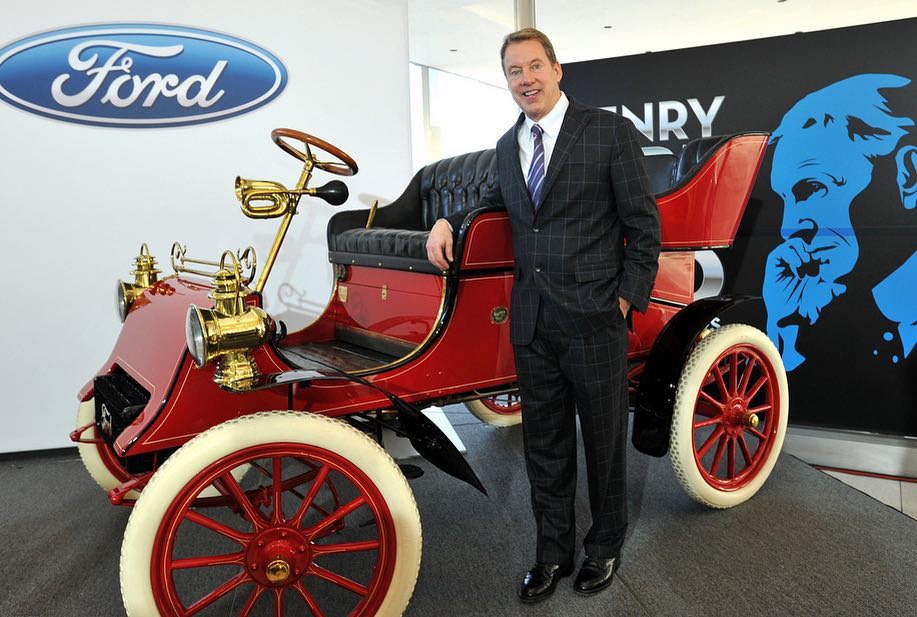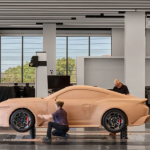Who Really Owns Ford—And Why Its Shareholder Base Shapes the Company’s Future
For a company as old and storied as Ford, ownership isn’t simply a corporate technicality it’s a window into how the automaker sees its future. Look past the stock tickers and filings, and you’ll find a power structure that mixes legacy influence, institutional muscle, and a long-term bet on a decades-deep industrial transformation. Even Ford’s redevelopment of its Dearborn headquarters positioned as a net-zero, innovation-driven campus reflects this alignment between capital and strategy. For CEOs in any legacy sector, Ford’s shareholder story is a reminder that the right ownership base doesn’t just finance change; it defines the pace and ambition of it.
The Institutional Core: Why Big Money Still Backs Ford
Most people imagine Ford as a “family company,” but the true engine behind its ownership is institutional.
Major asset managers—including long-term index stewards like Vanguard and BlackRock—hold significant stakes. Their presence gives Ford something rare: a stable base of shareholders who think in years, not quarters.
Institutional ownership may sound dry, but its implications are anything but. This is the capital that allows Ford to undertake multi-billion-dollar transitions: electrification, battery development, manufacturing overhauls, and more resilient supply chains. These investors aren’t day-trading Ford. They’re underwriting its evolution.
That kind of shareholder confidence doesn’t appear by accident. Large funds evaluate everything—governance, balance-sheet discipline, regulatory exposure, and long-range competitive viability. Their continued presence suggests that Ford, even in a fiercely competitive EV era, still represents an industrial thesis they believe in.

Jack Bogle, the founder of the Vanguard Group
The Ford Family’s Influence: Small in Size, Outsized in Direction
Insiders hold a modest amount of Ford’s shares today, but the Ford family retains strategic influence through a long-standing dual-class structure.
William Clay Ford Jr., the company’s executive chair, remains the symbolic and practical bridge between the company’s origin story and its future.
Unlike tech companies that use dual-class shares to entrench founders indefinitely, Ford’s structure exists to maintain continuity in a business measured in decades. Family influence is steady rather than domineering—providing cultural ballast while institutional capital steers the financial horizon.
This interplay is subtle but important: Ford isn’t run by a controlling family, nor is it entirely surrendered to Wall Street. It lives in the productive tension between heritage and market accountability.

William Clay Ford Jr
Why Ownership Structure Is a Corporate Strategy—Not a Footnote
Ownership is too often treated as bookkeeping. But in Ford’s case, it’s strategy.
A shareholder base dominated by major institutions imposes a certain discipline. Analysts expect credible capex allocation, transparent governance, and clear pathways to value creation especially as Ford navigates the high-stakes, high-cost transition to electrification.
At the same time, Ford’s governance framework prevents short-term pressures from derailing long-term bets. The company can’t afford a whiplash approach to innovation. Dual-class structures, while controversial in some circles, give Ford the ability to think generationally even when the market loses patience with transformation cycles.
As former Ford CEO Alan Mulally once put it in an interview with Harvard Business Review a rare, grounded quote befitting CEO Today’s readership—“Working together always works.”
Coming from a leader who shepherded Ford through the 2008 crisis without filing for bankruptcy, the remark points to the deeper truth: sustainable transformation requires aligned interests and long-term capital backing.
Governance Pressure: The Legal and Regulatory Lens
The legal side of ownership at Ford is increasingly significant. Several structural elements shape how the company must operate:
SEC Scrutiny and Reporting Demands
As a widely-held, large-cap public company, Ford is under intense disclosure obligations—particularly around ESG reporting, climate risk, executive compensation, and material risk assessment. Shareholders expect more than compliance; they expect clarity.
Dual-Class Debate
Dual-class voting structures frequently attract criticism from governance advocates and certain ETFs that restrict investments to one-share-one-vote companies. While Ford’s system is grandfathered and widely accepted by long-term investors, changing governance norms mean the company must continue to justify the model’s value to the market.
Capital Allocation Accountability
Ford’s EV strategy requires billions in upfront spending. That level of capital intensity naturally attracts shareholder scrutiny and potential activism. Ford’s leadership must maintain the confidence of institutional investors while defending investments that may not fully pay off for several years.
This is where Ford’s hybridized ownership structure becomes an advantage. It creates a governance environment where bold investments can survive shareholder pressure—provided the strategy is sound, data-supported, and transparently communicated.
Why This Matters for CEOs Outside the Automotive Sector
Ford’s ownership isn’t unique because of the people who hold the shares—it’s unique because of how those shareholders shape the company’s freedom to transform.
Every CEO navigating a capital-heavy reinvention can draw lessons from Ford:
-
Balance heritage with market realism: Too much nostalgia scares off institutions; too little weakens culture.
-
Build governance that can withstand transformation: Strategic overhauls require patient capital and resilient board structures.
-
Use ownership as a strategic asset, not an afterthought: The right shareholders provide not just money, but stability, pressure, and accountability.
In an era where every industry is confronting technological disruption, Ford’s ownership architecture offers a blueprint for surviving the transition without losing the essence of the organisation.
Conclusion: The Ownership Engine Behind Ford’s Next Chapter
Ask who owns Ford, and you’ll find a mosaic—index fund giants, global asset managers, family stewards, and millions of individual investors. But ask why that ownership matters, and a more interesting story emerges: Ford has consciously built a shareholder ecosystem capable of supporting the most significant transformation in its century-long history.
Ownership isn’t just structure. It’s strategy, leverage, and identity. And Ford’s future will depend on how well those forces stay aligned.
Key Questions About Ford’s Ownership and Governance
Who is Ford’s largest shareholder today?
Primarily major institutional investors, with Vanguard and BlackRock holding the biggest positions through index and retirement funds.
Does the Ford family still control the company?
The family has a small economic stake but retains meaningful influence through long-standing voting rights, giving them a steady voice in strategic direction.
Why do institutions hold so much of Ford’s stock?
Ford’s scale, liquidity, and long-term transformation plans align well with institutional investment mandates, making it a natural fit for index and pension portfolios.
How does Ford’s ownership shape its EV strategy?
Institutional investors expect disciplined execution, while the family’s voting structure provides stability for long-horizon initiatives like electrification.
Is Ford vulnerable to activist investors?
It’s possible, but the combination of institutional support and the family’s voting influence creates a degree of protection against short-term activist pressure.













